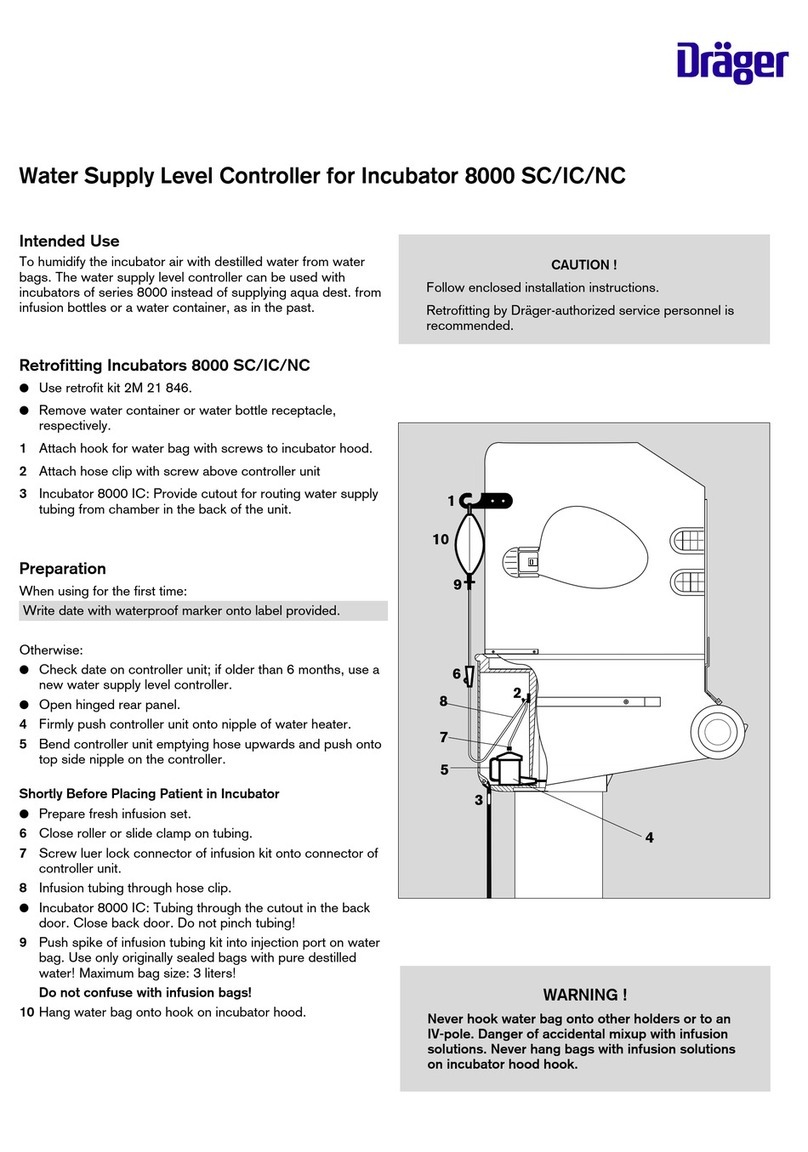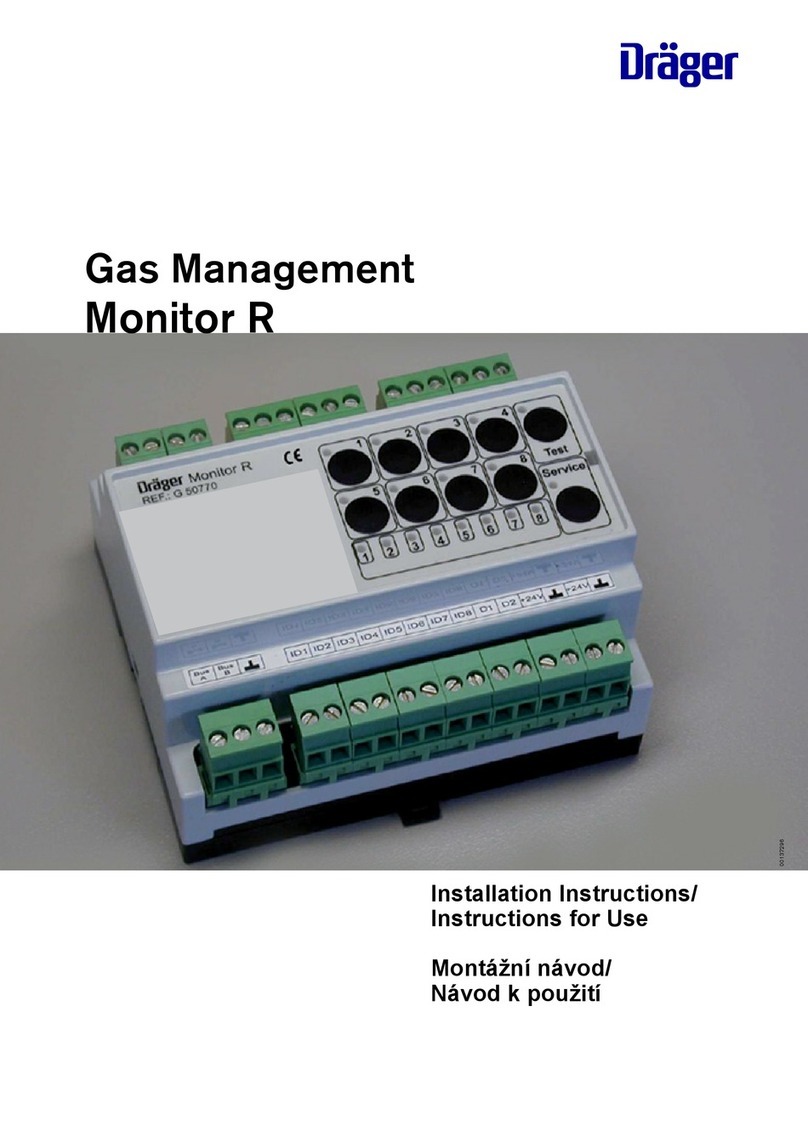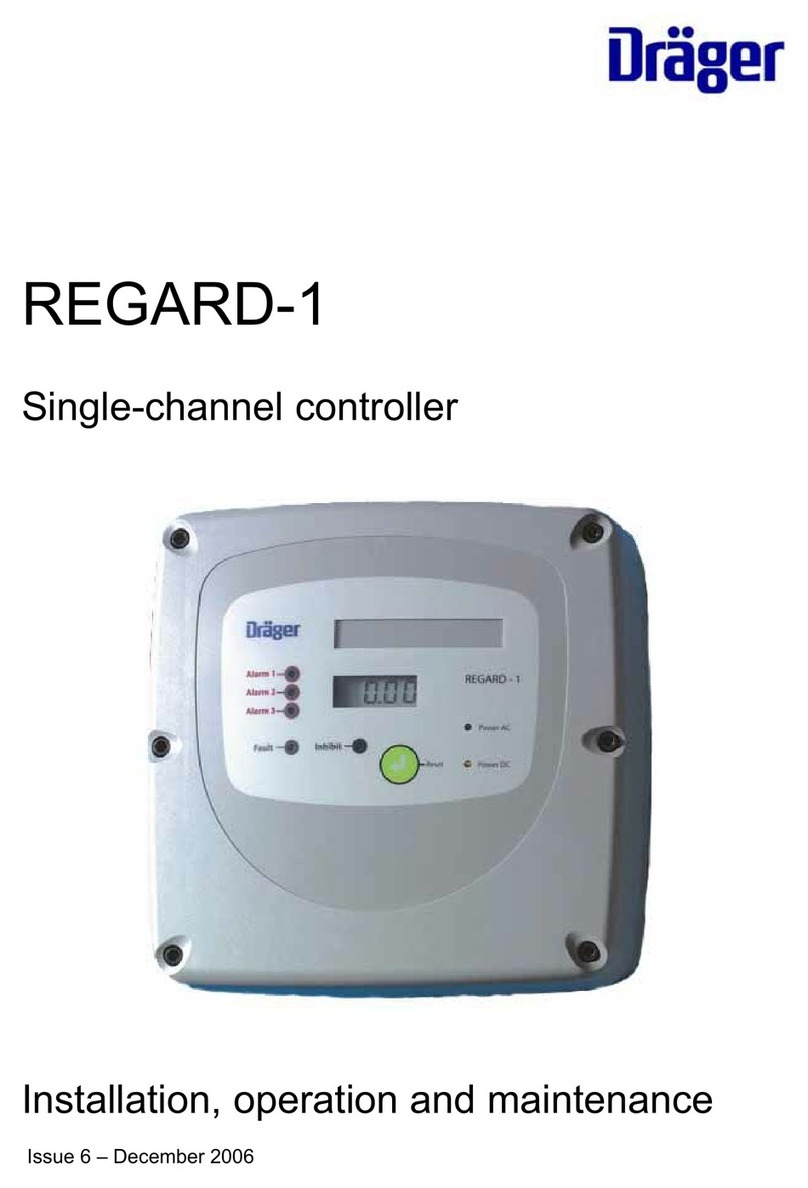
Gebrauchsanweisung Alduk IV 3
Deutsch
Zu Ihrer und Ihrer Patienten
Sicherheit
Gebrauchsanweisung genauestens beachten
Instandhaltung
Patientensicherheit
Mit der Ausstattung des Medizinprodukts, der dazu-
gehörigen Dokumentation und den Medizinprodukt-
schildern wird davon ausgegangen, dass das Medi-
zinprodukt ausschließlich von Personen erworben
und eingesetzt wird, denen die grundlegenden Funk-
tionen des Medizinprodukts bekannt sind.
Die Anweisungen zum Gebrauch sowie die mit
WARNUNG und ACHTUNG gekennzeichneten Si-
cherheitsinformationen beschränken sich daher im
Wesentlichen auf die Besonderheiten des Dräger-
Medizinprodukts.
Die Gebrauchsanweisung enthält keine Informatio-
nen zu folgenden Punkten:
– Gefahren, die für Anwender offensichtlich sind
– Konsequenzen offensichtlicher Fehlbedienung
des Medizinprodukts
– Mögliche negative Auswirkungen auf Patienten
mit unterschiedlichen Grunderkrankungen
Veränderungen am Medizinprodukt oder eine fal-
sche Verwendung des Medizinprodukts können ge-
fährlich sein.
Sicherheitshinweise für den Umgang mit
Sauerstoff
Hinweise auf Vorschriften
Die entsprechenden nationalen Vorschriften für den
Umgang mit O2müssen beachtet werden.
WARNUNG
Gefahr der Fehlbedienung und der fehlerhaften
Nutzung
Jede Anwendung des Medizinprodukts setzt
die genaue Kenntnis und Beachtung aller Kapi-
tel dieser Gebrauchsanweisung voraus. Das
Medizinprodukt darf ausschließlich für den un-
ter "Zweckbestimmung" angegebenen Zweck
verwendet werden.
Alle mit WARNUNG oder ACHTUNG gekenn-
zeichneten Sicherheitsinformationen in dieser
Gebrauchsanweisung sowie die Informationen
auf den Medizinproduktschildern genauestens
beachten. Die Missachtung dieser Informatio-
nen ist ein Gebrauch des Medizinprodukts au-
ßerhalb der Zweckbestimmung.
WARNUNG
Gefahr von Fehlfunktionen
Unzulässige Modifikationen am Medizinprodukt
führen zu Fehlfunktionen.
Ohne Erlaubnis von Dräger darf dieses Medizin-
produkt nicht geändert werden.
WARNUNG
Gefahr der Fehlfunktion des Medizinprodukts
und einer Patientengefährdung
Das Medizinprodukt muss regelmäßig Inspekti-
onen und Wartungen durch Instandhaltungs-
personal unterzogen werden. Instandsetzun-
gen und komplexe Instandhaltungen des Medi-
zinprodukts müssen durch Fachleute vorge-
nommen werden.
Wenn Vorstehendes nicht berücksichtigt wird,
kann es zu Fehlfunktion des Medizinprodukts
und einer Patientengefährdung kommen. Kapi-
tel "Instandhaltung" beachten.
Für den Abschluss eines Service-Vertrags so-
wie für Instandsetzungen empfiehlt Dräger den
DrägerService. Für Instandhaltungen empfiehlt
Dräger die Verwendung von Original-Dräger-
Teilen.
WARNUNG
Explosionsgefahr
O2-Flaschen vor dem Umfallen schützen und
keiner starken Wärme aussetzen.
WARNUNG
Explosionsgefahr
O2-Anschlüsse wie Ventile von Gasflaschen,
Druckminderer und Feindosierventile nicht
ölen oder fetten und nicht mit fettigen Händen
anfassen.
WARNUNG
Brandgefahr durch unkontrollierte Druckstöße
Ventile von Gasflaschen nur langsam mit der
Hand öffnen und schließen. Keine Werkzeuge
benutzen. Gleichmäßig drehen.
WARNUNG
Brandgefahr
Nicht rauchen, kein offenes Feuer.
O2fördert jede Verbrennung!


































